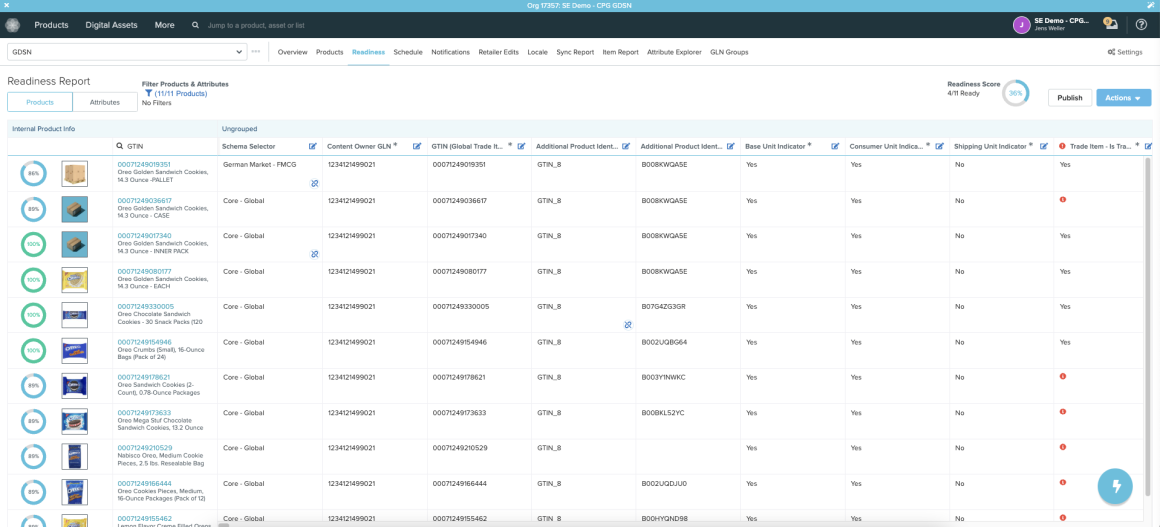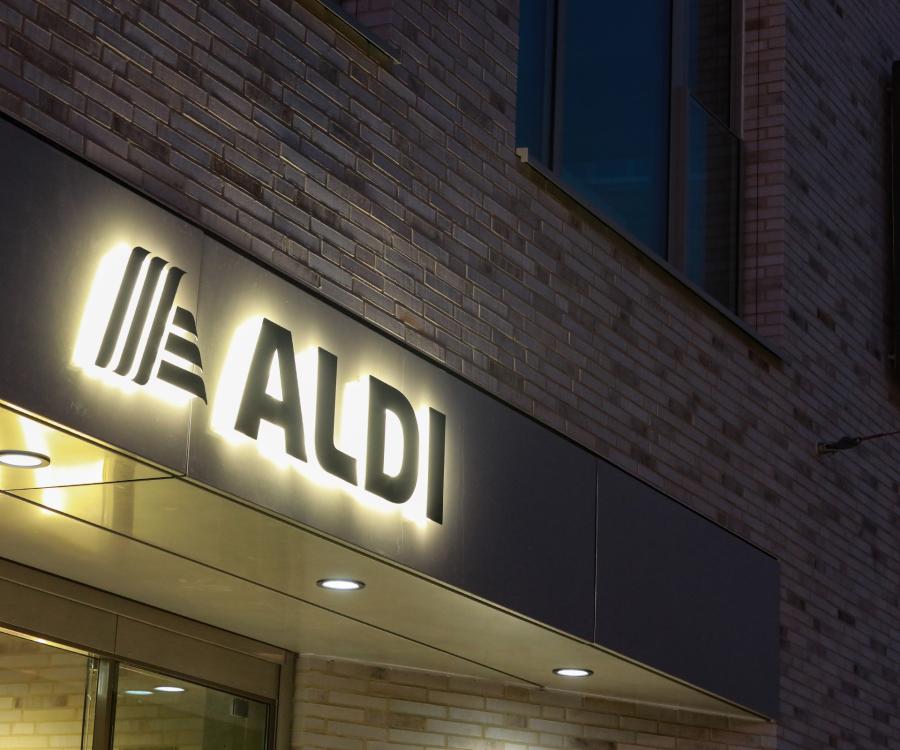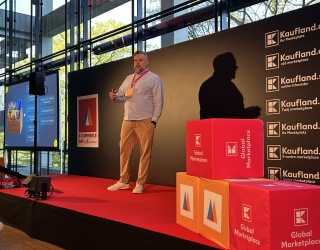GS1 Germany released two new requirements impacting brands selling food/beverage (and food-adjacent) products to the German market aiming at increasing product data quality passing through the Global Data Synchronization Network (GDSN).

With over 635 billion EUR sales turnover, the German retail market size is noteworthy - representing a remarkable revenue source and opportunity also for international brands. An important local specificity to take into account is that the vast majority of German retailers (over 80%) requires GDSN data, a fact that has been fostered by regulations like EU 1169 and increasing online business. The GDSN standard in Germany is developed and maintained by GS1 Germany, together with the main retailers and brand manufacturers.
Looking at the consumer side, Salsify’s latest Consumer Research revealed that accurate, complete and high-quality product content is a major potential online revenue driver, with 62% of German shoppers abandoning an online purchase because of lacking product information, and 43% of them returning a product if it does not match the online product images.
GS1 Germany’s initiative of introducing new rules goes hand in hand with customers’ need for satisfactory product information.
Media Asset Publication
The first new requirement has been in effect since February 2023 and is related to the Media Asset Publication, making it obligatory for brands to include at least one image for every product they sell using GDSN data. That image needs to adhere to GS1’s formatting specifications. This means that brands are required to provide new digital assets that they did not need to publish via GDSN ever before. GS1 Germany’s changes to publishing new media pieces aims at helping retailers support omnichannel (in-store and ecommerce) - and consumer expectations related to it.
To face this new challenge, brands will most commonly use a manual process to find and download each asset, transform it to meet GS1 formatting requirements and upload it into the Data Pool, all with little visibility into whether or not brands have adhered completely with the business rules. Handling the imposed new rule this way reflects a reality where brands have an ERP (or other systems) directly feeding the GDSN Data Pool - but digital assets are stored separately. So this makes the Media Asset Publication requirement a challenge to be resolved in a more efficient way going forward.
Data Quality Excellence
The second requirement is related to Data Quality Excellence (DQX) and was released on 20th May 2023. DQX requires a visual inspection of the product packaging to ensure the consistency of data between the packaging and the GDSN product data. Non-compliance with DQX can result in costly fees, of which can vary depending on the method brands take to adhere. Brands can realize the visual inspection via two different methods: ComfortCheck or SelfCheck. For ComfortCheck, GS1 conducts the inspection to validate that published GDSN data matches the actual product packaging. For SelfCheck, brands take on the responsibility. However, the latter case can only happen after the brand has achieved a 97% Data Quality score and gets certified GS1 Germany to be eligible to do this on its own.
Looking at the earlier mentioned consumer research data, any discrepancy in data tends to result in abandoned online purchases or returns and a generally poor customer experience. So while this new requirement might look like additional cumbersome work for brands to ensure compliance, it is meant to have positive implications for the impacted products and brands, their retailers, and ultimately the consumers.
To handle this new requirement, brands will either enter data in their Data Pool, or it is sent from upstream sources (ERPs), with some validations being immediate. GS1’s weekly Data Quality reports will prompt brands to fix errors and repeat the process, but this may prolong time to market. Brands that elect to adhere with DQX via ComfortCheck must now send packaging artwork to the Data Pool for GS1 to inspect and will face the same challenges as the Media Asset Publication requirement. In addition, for each inspection GS1 conducts in which errors are found, brands will need to pay inspection fees. Brands that do the inspection themselves via SelfCheck will have to wait to know their Data Quality score and pay annual certification fees.
These new obligations impact all food/beverage and food-adjacent categories including pet care, cleaning supplies, hygiene, cosmetics, ie. any product containing ‘ingredients’.
Risks of Non-Compliance
While the new GS1 Germany requirements represent an opportunity for the affected product categories to deliver higher data quality according to GS1 standards, brands are facing numerous risks if not complying to them: product data is likely not to arrive at its ultimate destination - the retailers, and may result in delayed time to market, missed deadlines - which often comes with additional fees, and time-consuming manual rework to address data discrepancies.
Keys Towards Compliance
In the light of these data quality related GS1 Germany requirements that came into effect recently, brands have new opportunities to reach consumers with better, more complete product content - despite the burden and potential costs that the changes may imply at first glance. In any case, to avoid the latter scenario, brands can (and should) rely on technology to help them remain in compliance with efficiency.
Salsify’s Product Experience Management (PXM) Platform for example helps brands manage digital assets, transform and publish them directly to the GDSN data pool in the format required by GS1 Germany to ensure compliance with the Media Asset Publication requirement, and can help ensure data quality to adhere with the DQX changes.
Moreover, PXM supports brands in delivering best possible product experiences across every selling destination by allowing the centralization of all product content, the connection to the commerce ecosystem and automation of business processes.
The implications, impact and solutions to the new challenges regarding GDSN Media Publishing and DQX are explained in 30 minutes in this on-demand webinar.






